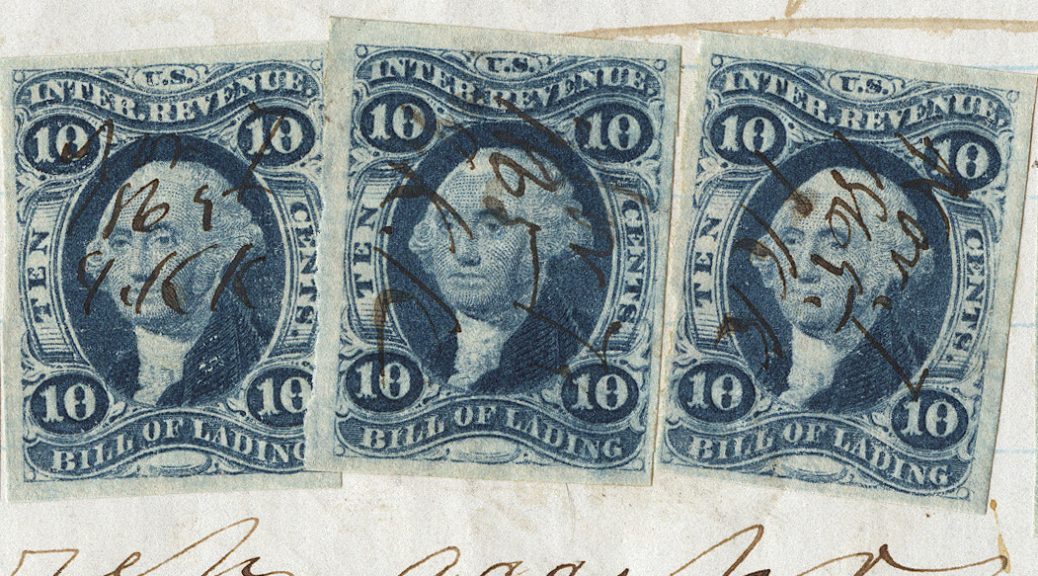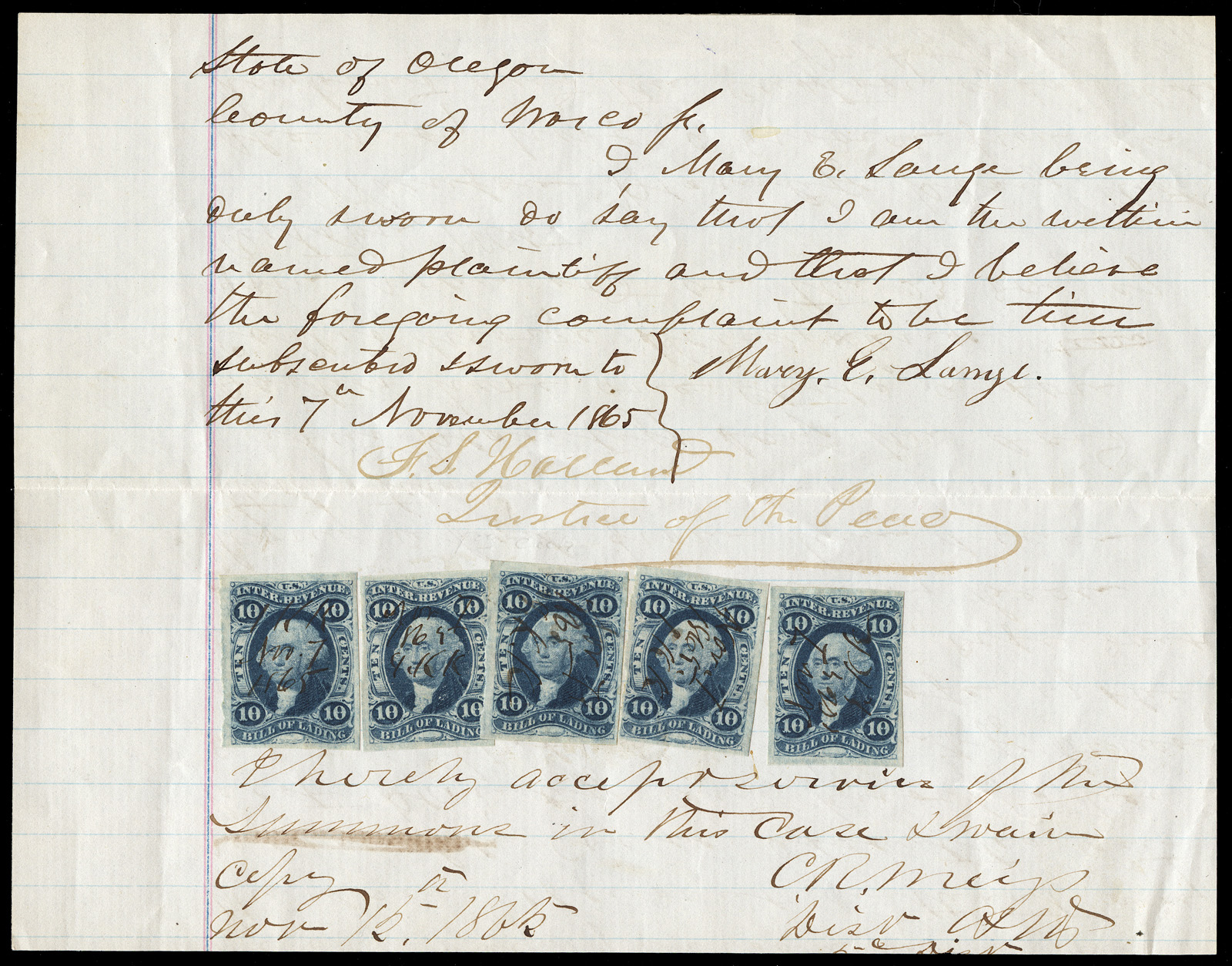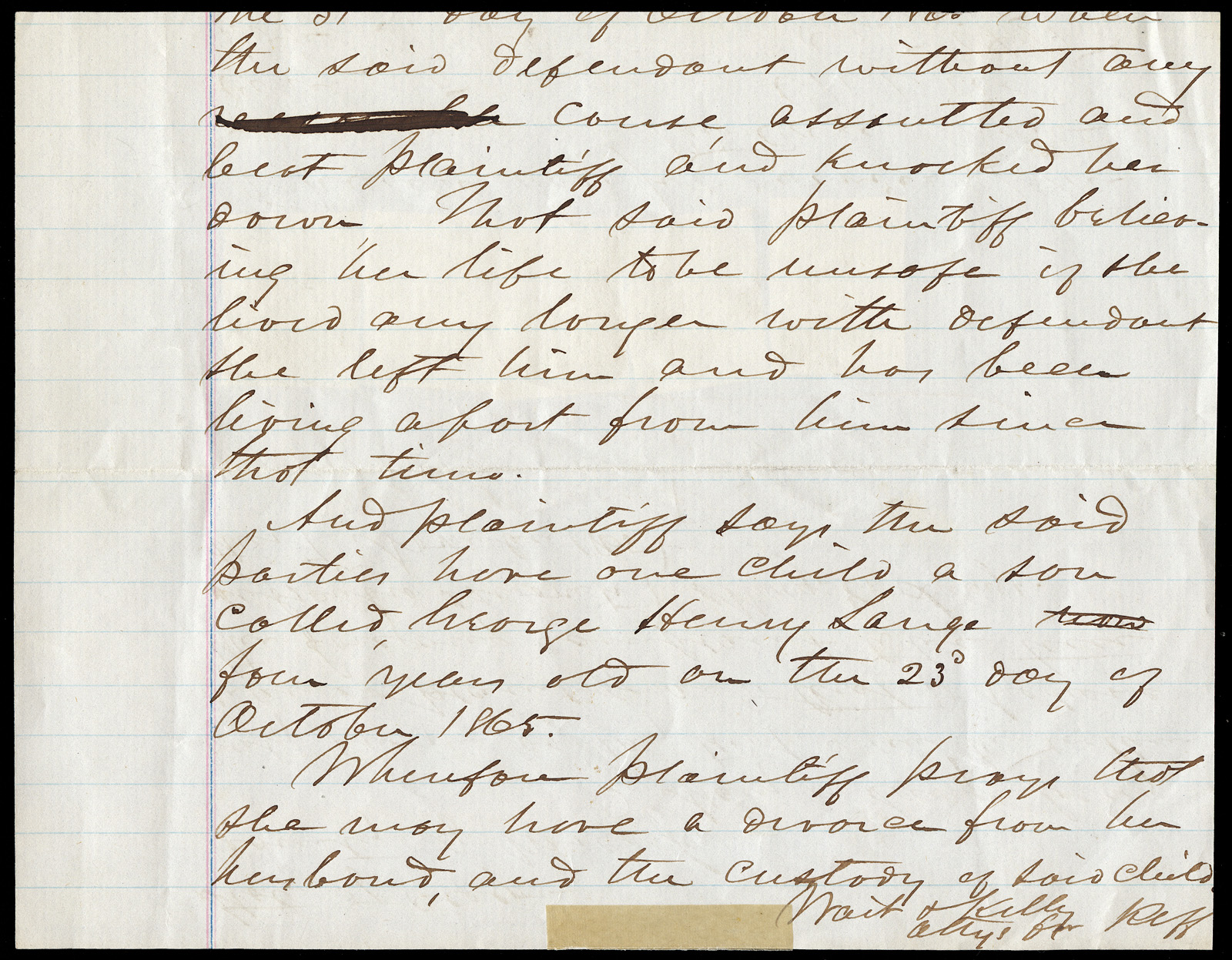
Pros And Cons Of Removing Revenue Stamps From Documents
We’ve had discussions about removing stamps from documents and covers, and how it’s generally not recommended for 19th-century pieces unless the document/cover is tattered, incomplete, or remaining intact runs further risk of destabilization.But what about stamps on pieces or covers or documents that are only partially complete? Then it becomes a bit more discretionary, especially if the stamps themselves are quite nice. It’s quite plausible that one or more stamps removed from a cover or document could have higher appeal and/or marketability when separated and/or removed from the host.
So here’s an example where the decision might not necessarily be obvious on its face to non-revenue-specialists:
It’s a document fragment I purchased courtesy of The Bay of E, a portion of a court document. It has 5 examples of Scott R32a (catalogue value of $70 each). Most are quite lovely and appear to be sound. Separating these out as singles for inventory could be quite lucrative for a dealer.
Would you do it? Why or why not?
Setting aside for a moment the notion that we should preserve transactional documents like this rather than breaking them down, there is actually a much more prudent reason not to remove these stamps from the document fragment.
Looking at the attributes of the document, it’s from the state of Oregon, dated November 7, 1865.
November 1865 is an inordinately late usage date for a genuine imperf. Late enough to raise red flags if the stamps were encountered off document. Sure the color and impression are right for an imperf printing, but that cancel date could quite likely give collectors pause.
However, while still intact and showing the context of the usage, it tells us that this is one of the “West Coast late usage imperfs”. Imperfs and part perfs were generally long used up by this date… except for some reason in California and other west coast states. There must have been a hoard of these that sat in storage somewhere and then were liberated later to be utilized long after they ordinarily would have been seen. I’ve seen genuine California usages of imperfs as late as 1870.
While still on document, it’s clear that they are genuine. Take them off document and there are collectors that would shy away from them JUST because of the cancel date.


